Searching for the Philosopher’s Stone
The following blog is the account of 10 year old Zachary’s visit to the Library’s Special Collections to see early Alchemical books to help with a school project.
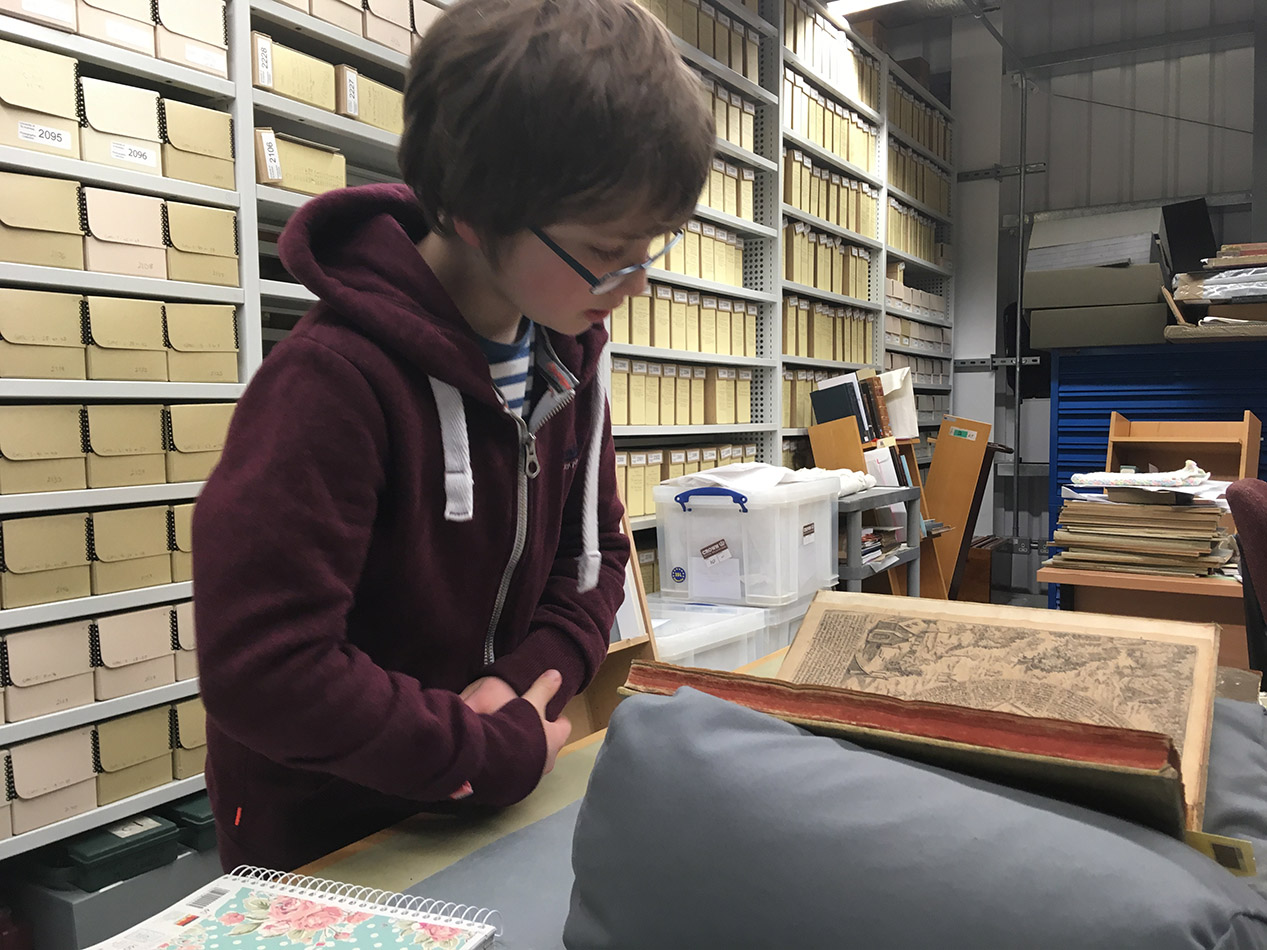 I had a lovely time recently looking at some old books to help me with a project on the “Lapis Philosophorum”, or philosopher’s stone. The philosopher’s stone was a legendary substance capable of turning metals such as mercury into gold. I found out some information about Nicolas Flamel (1340-1418) who was a French scribe and manuscript-seller. After his death he gained the reputation for having discovered the philosopher’s stone. He acquired a 22-page book on how to make the philosopher’s stone. He travelled to Spain for help with translating the book. When he had returned to Paris Flamel and his wife managed to turn mercury into silver and then gold. After he died his house was ransacked by people looking for alchemical secrets. His tombstone was apparently discovered in a grocery in Paris being used as a chopping board!
I had a lovely time recently looking at some old books to help me with a project on the “Lapis Philosophorum”, or philosopher’s stone. The philosopher’s stone was a legendary substance capable of turning metals such as mercury into gold. I found out some information about Nicolas Flamel (1340-1418) who was a French scribe and manuscript-seller. After his death he gained the reputation for having discovered the philosopher’s stone. He acquired a 22-page book on how to make the philosopher’s stone. He travelled to Spain for help with translating the book. When he had returned to Paris Flamel and his wife managed to turn mercury into silver and then gold. After he died his house was ransacked by people looking for alchemical secrets. His tombstone was apparently discovered in a grocery in Paris being used as a chopping board!
I met Jen (Jennifer Schaffner, Temporary Project Cataloguer) who showed me some of the books collected by John Read who was Professor of Chemistry at St Andrews from 1923-1963. He was very interested in early science and collected some amazing books. Jen showed me some of the books. Some of them were from the 1500s. There are seven metals of alchemy – gold, silver, mercury, copper, lead, iron and tin. The metals were also represented by creatures.
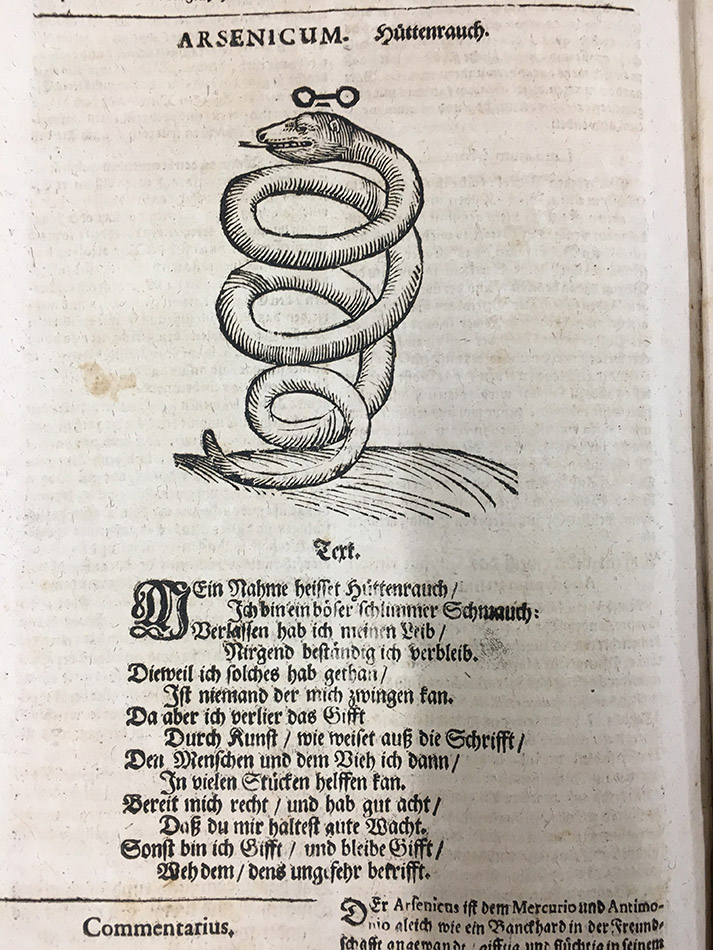
The alchemical processes were also represented by images: Nigredo (the Black Death), Albedo (the Whitening) and Rubedo (the process which produces the philosopher’s stone). I saw some books with pictures of famous scientists including Roger Bacon who was alive in the 13th century and had a reputation for working on alchemy and magic, and was known as Doctor Mirabilis, which means “Wonderful Teacher”.
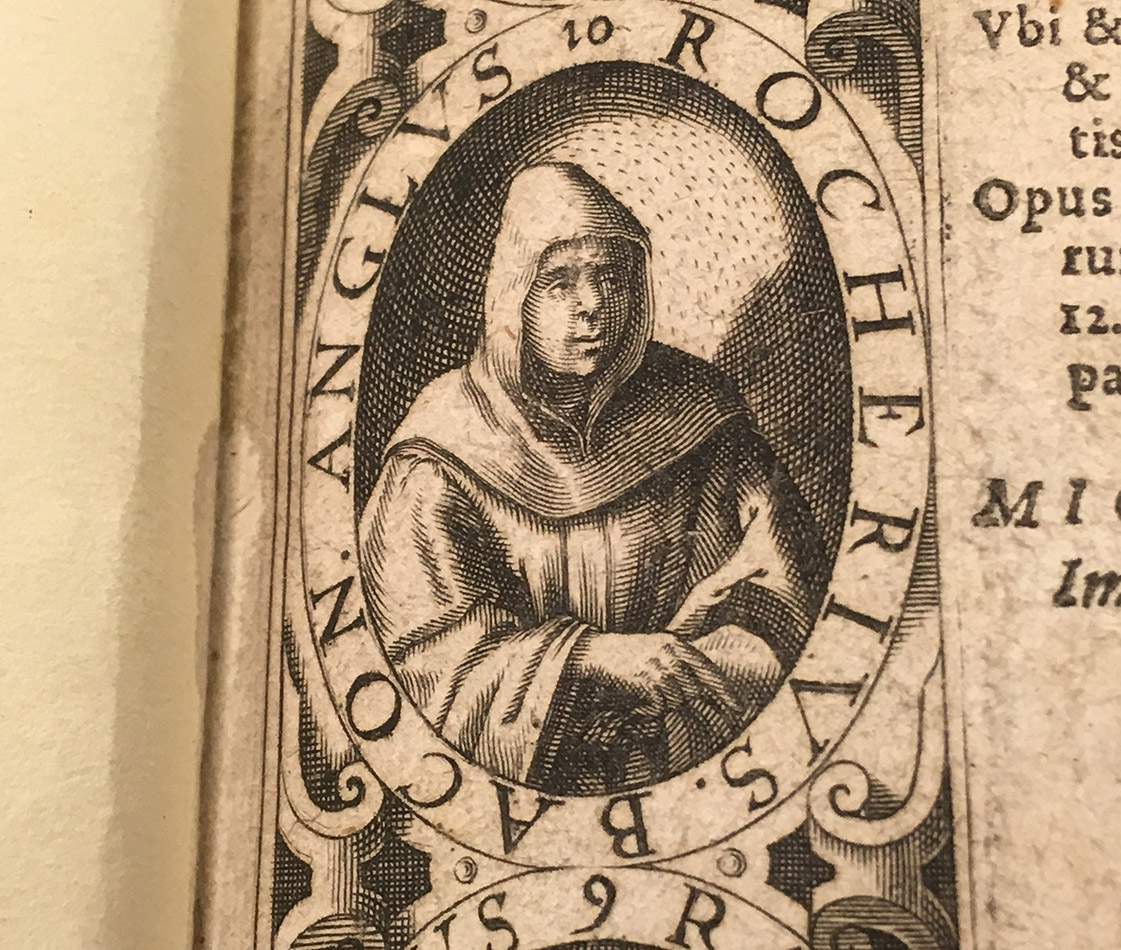
I also saw some 19th century chemistry text books including by Humfrey Davy who discovered several new elements and invented the miners’ safety lamp.
Not long after seeing the books with Jen, I was in London and went to the Harry Potter: A History of Magic exhibition at the British Library. I was able to understand the exhibition better because of my visit to Special Collections, but the best bit was seeing the Ripley Scroll which shows the different stages in the alchemical process of preparing the philosopher’s stone, which was needed to turn base metals into gold. The scroll is huge!
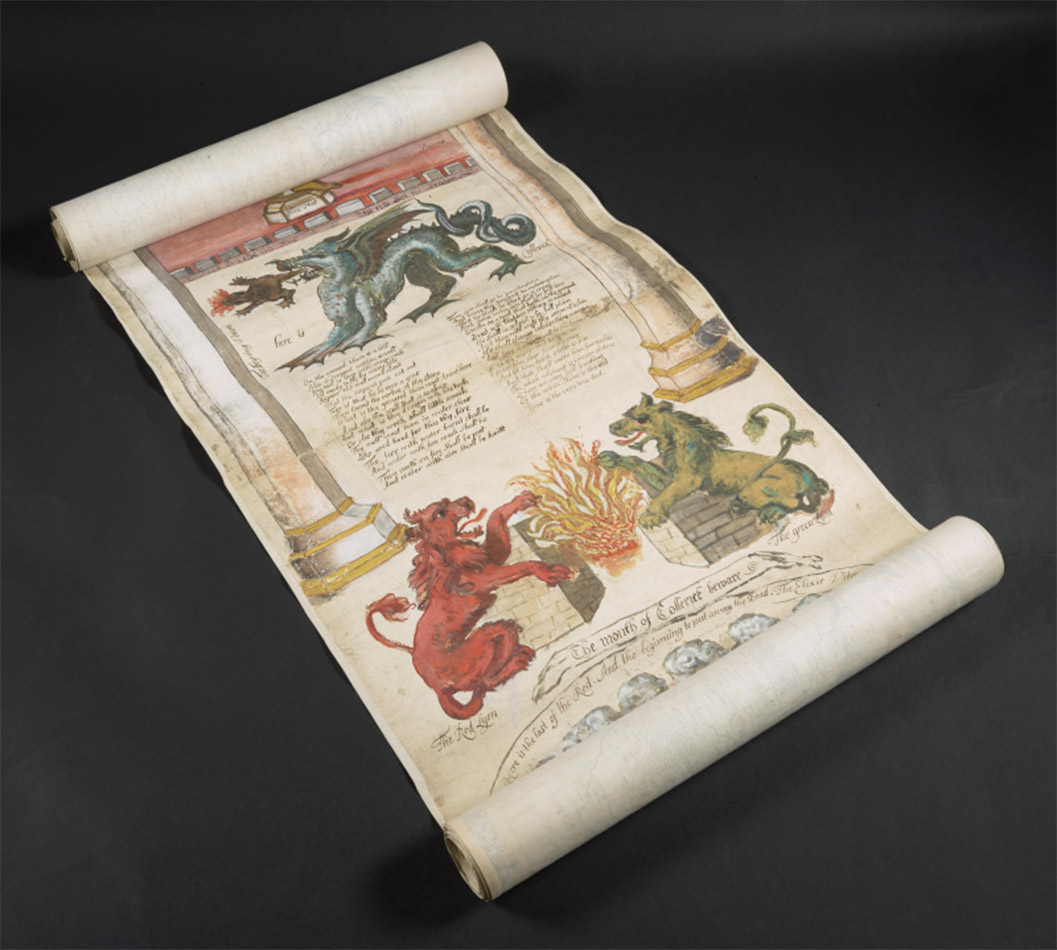
It is named after George Ripley, a medieval canon of Bridlington Priory in Yorkshire, and who wrote about the philosopher’s scroll. The scroll was covered in interesting symbols, although historians are still not sure what they all mean. There are 23 copies of Ripley’s scroll – the most recent one was discovered at the Science Museum in London in 2012.
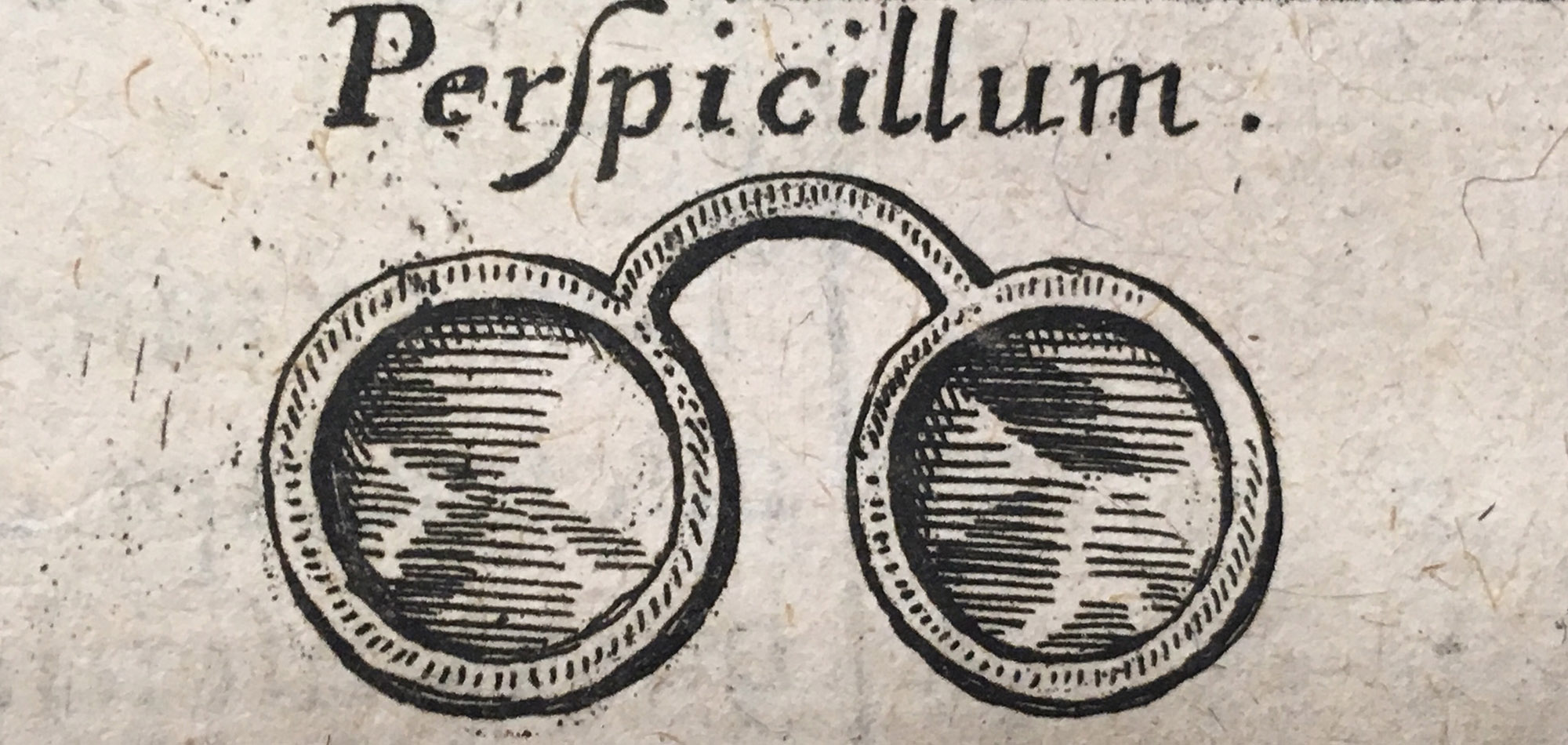
I really enjoyed seeing the books. Thank you!
Zachary
Special Collections Visitor
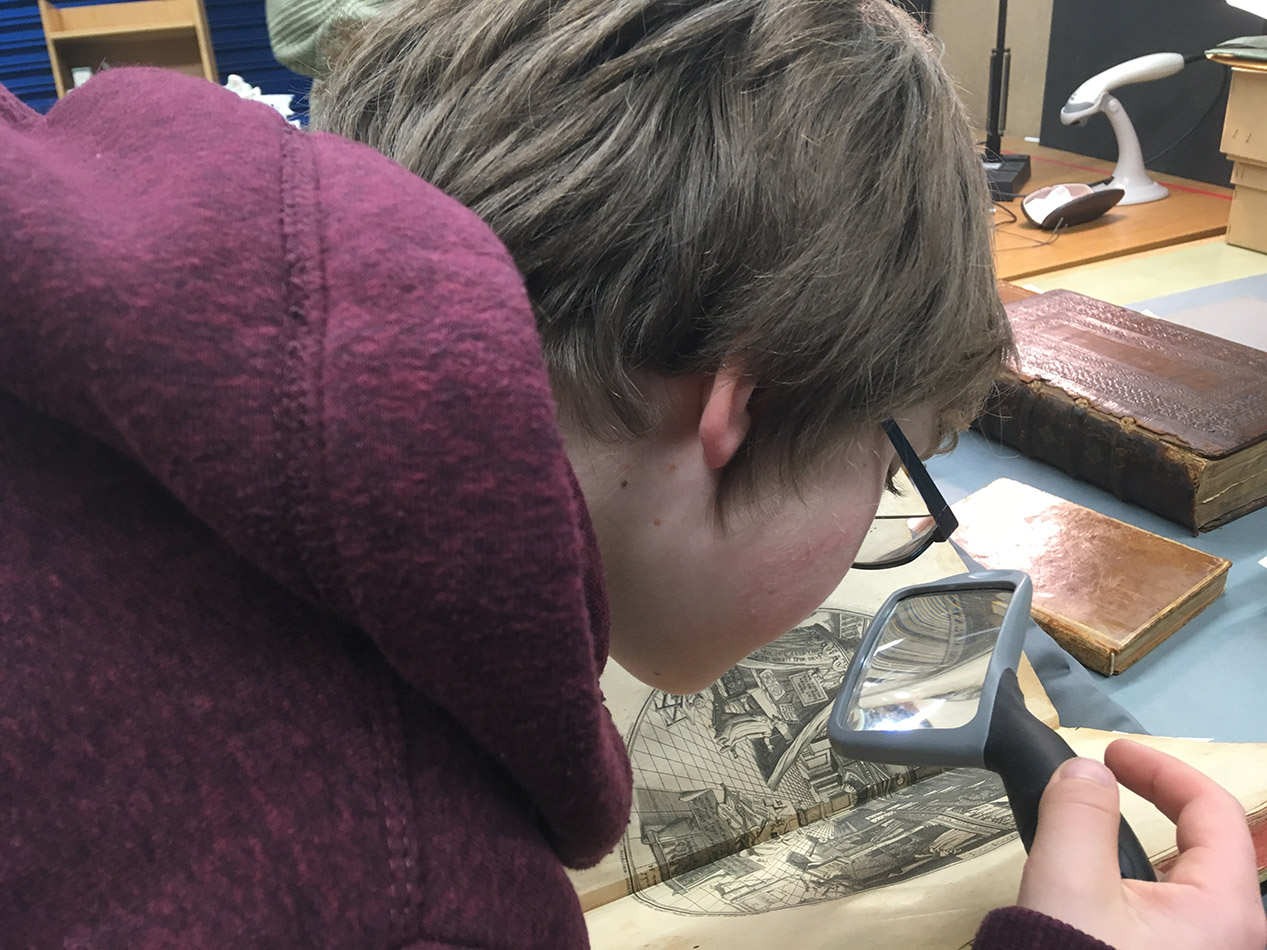
How well Zachary writes about his experience in the Rare Books Collection, and his subsequent visit to the British Museum. Knowledge building on knowledge! It's interesting to see how much his quest opened up his eyes to doing research, making discoveries, and enjoying the world more because of this opportunity that began in St. Andrews.